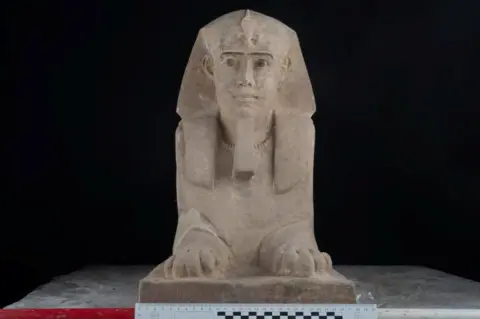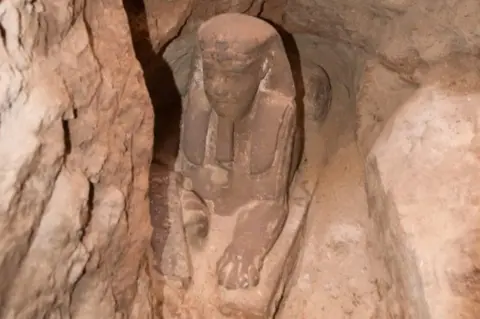Egyptian archaeologists find sphinx at Aswan temple
 Reuters
ReutersEgyptian archaeologists have discovered a statue of a sphinx while draining water from the pharaonic temple of Kom Ombo near the southern city of Aswan.
The antiquities ministry said the statue of the mythical beast, which measures about 28cm (11in) wide and 38cm tall, was made of sandstone.
It probably dates back to the Greco-Macedonian Ptolemaic dynasty, which ruled Egypt from 305BC until 30BC.
Two sandstone reliefs of King Ptolemy V were also recently found at the temple.
After the coronation of Ptolemy V, who ruled from 210 BC until 180 BC, priests at the sacred city of Memphis issued the famous Rosetta Stone, which listed his noble deeds. Many centuries later, the stone helped experts learn to read ancient Egyptian hieroglyphs.
The temple of Kom Ombo, where the sphinx was found, was built during the reign of his son, Ptolemy VI. It hosted the twin gods Sobek and Haroeris.
 Reuters
ReutersThe head of Aswan's antiquities department, Abdul Moneim Saeed, said experts would carry out further studies of the statue to find out more about its purpose.
The sphinx represented royal power in ancient Egypt, combining the physical strength of a lion with the worldly might of a king.
The Great Sphinx by the pyramids of Giza is the largest and most famous.
Standing 20m (65ft) tall and 57m long, it is believed to have been carved from an outcrop of limestone during the reign of Khafra, a king of the Fourth Dynasty who ruled from 2558BC to 2532BC.
